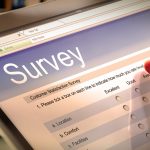How Hospice and Home Health Organizations Can Harness the Power of Analytics
Today, most organizations across all industries employ analytics to identify new opportunities and trends.
Unfortunately, for many smaller organizations, especially in the non-profit sector, the use of data is limited in organizational decision-making. According to a recent study by HubSpot, only 40 percent of non-profit organizations used data to make decisions. And while 90 percent of those surveyed were collecting data, only five percent said they used data for every decision.
Why Analytics Usage is Low
Hospice and home health organizations commonly cite these reasons for not implementing an analytics program:
- Expense – With tight budgets, many organizations believe the cost of implementing a robust analytics program and the required software are too expensive.
- It’s not necessary – Many organizations believe they have what they need for measurement, and that a more robust analytics program is for larger organizations or different industries such as e-commerce.
- Staffing – With small marketing staffs, many hospice and home health organizations lack the personnel, experience and time to track and provide insights on the data collected properly.
Why Analytics Usage Shouldn’t Be Low
While the reasons above may make sense on the surface, they are easily addressable and should not stand in the way of implementing an analytics program. The reality is:
- There are low-cost options – Yes, there are fancy, expensive, complex analytics programs out there. However, for most organizations, the free suite of analytical tools and dashboards offered by Google is more than sufficient. The cost usually lies in a one-time custom implementation by an analytics consultant or agency.
- It is for you – Today, nearly every marketing tactic is measurable. If your organization has a website, social media program or does online and offline advertising, a robust analytics program is essential in making smart sales and marketing decisions.
- Provide current staff with easy-to-use dashboards – Many hospice and home health marketers know what they want to measure. With the proper tools – like dashboards that provide real-time data on organizational goals and Key Performance Indicators (KPIs) – hospice and home health agencies can get there. An analytics consultant, like Transcend, can create your dashboard, saving your marketing staff from dealing with the technical side of analytics.
- Benefits – When properly implemented, an analytics program can save an organization money –and who doesn’t want that? It creates more data-driven decision-making by taking the guesswork out marketing strategies and gives an organization the tools to adequately evaluate campaign results. And with more data in your back pocket, it makes it easier to approach executive leadership for additional budget.
How Do I Get Accurate, Accessible, Meaningful Data?
We recommend using the analytics tools from the Google Marketing Platform. These tools provide robust data when implemented correctly. How is this done?
- Begin with a customized implementation of Google Analytics – Unfortunately, many hospice and home health agencies use the “out of the box” version of Google Analytics with no customizations. One of the most significant issues is the lack of filters. If you aren’t filtering internal and partner traffic, your data is getting diluted and likely is not an accurate depiction of your targeted audience. There are many additional filters Google Analytics requires for clean data, including combining of duplicate URLs and removal of spam. Those need to be applied.
- Implement other Google tools – Google offers other free tools that can provide data. Connecting to Google Search Console will provide insight on organic search for your site. Implementing Google Tag Manager will provide data that goes beyond the page view data supplied by Google Analytics. It will give user engagement data such as downloads, navigation behaviors, form submission and video usage.
- Dashboards and KPIs – Once your data-collecting platforms are in place, outcome-based KPIs must be developed. These KPIs determine how to measure the success of a marketing initiative. In addition to these key metrics, you will want to provide benchmarks and additional insights so end users can quickly ascertain how a marketing initiative or organizational goal is performing.
These KPIs need to reside in a user-friendly dashboard. Having an accessible dashboard will allow users to check in frequently to monitor the progress of initiatives. Google provides two free dashboard options. Within Google Analytics, you can set up dashboards. Google’s answer to Tableau, an interactive data visualization dashboard, is Google Data Studios. This free interactive dashboard is completely customizable and can include analytics beyond web analytics such as social media.
With analytics platforms becoming more affordable, smaller organizations can now have the same access to data that larger companies have relied on for years when making data-driven decisions to better understand its target audience. Who wouldn’t want this type of data at their disposal for their organization?
You don’t have to delay this decision any longer. If you aren’t sure where to start or are feeling a bit overwhelmed, talk to analytics expert who can audit your current analytics set up and make a recommendation on how to better serve you and your organization’s needs.










